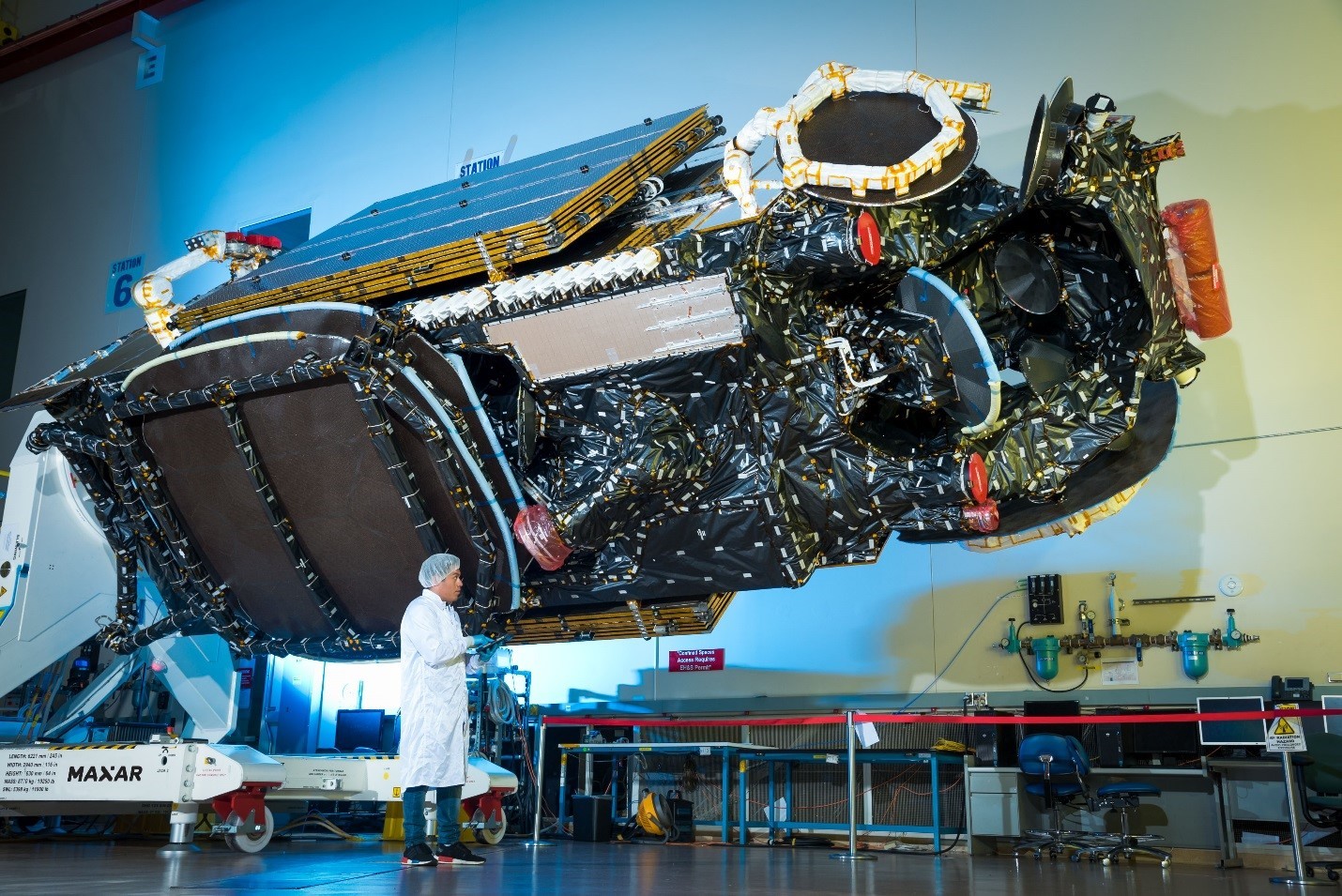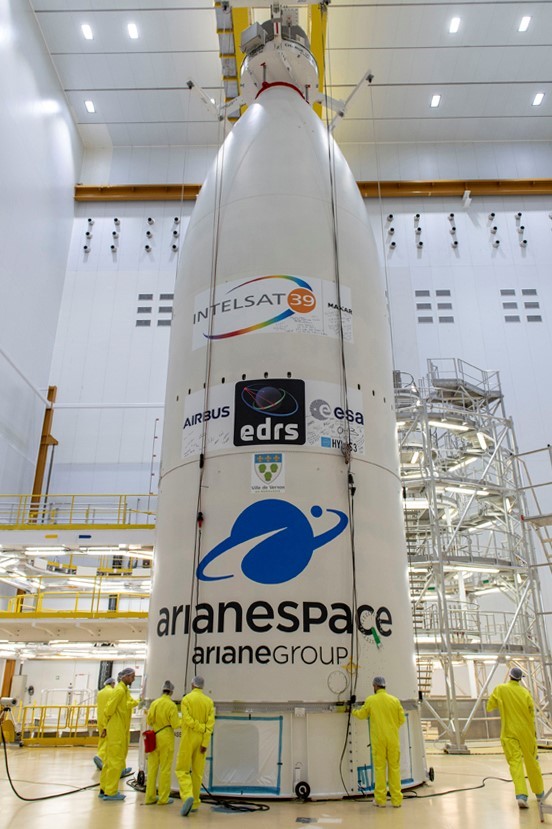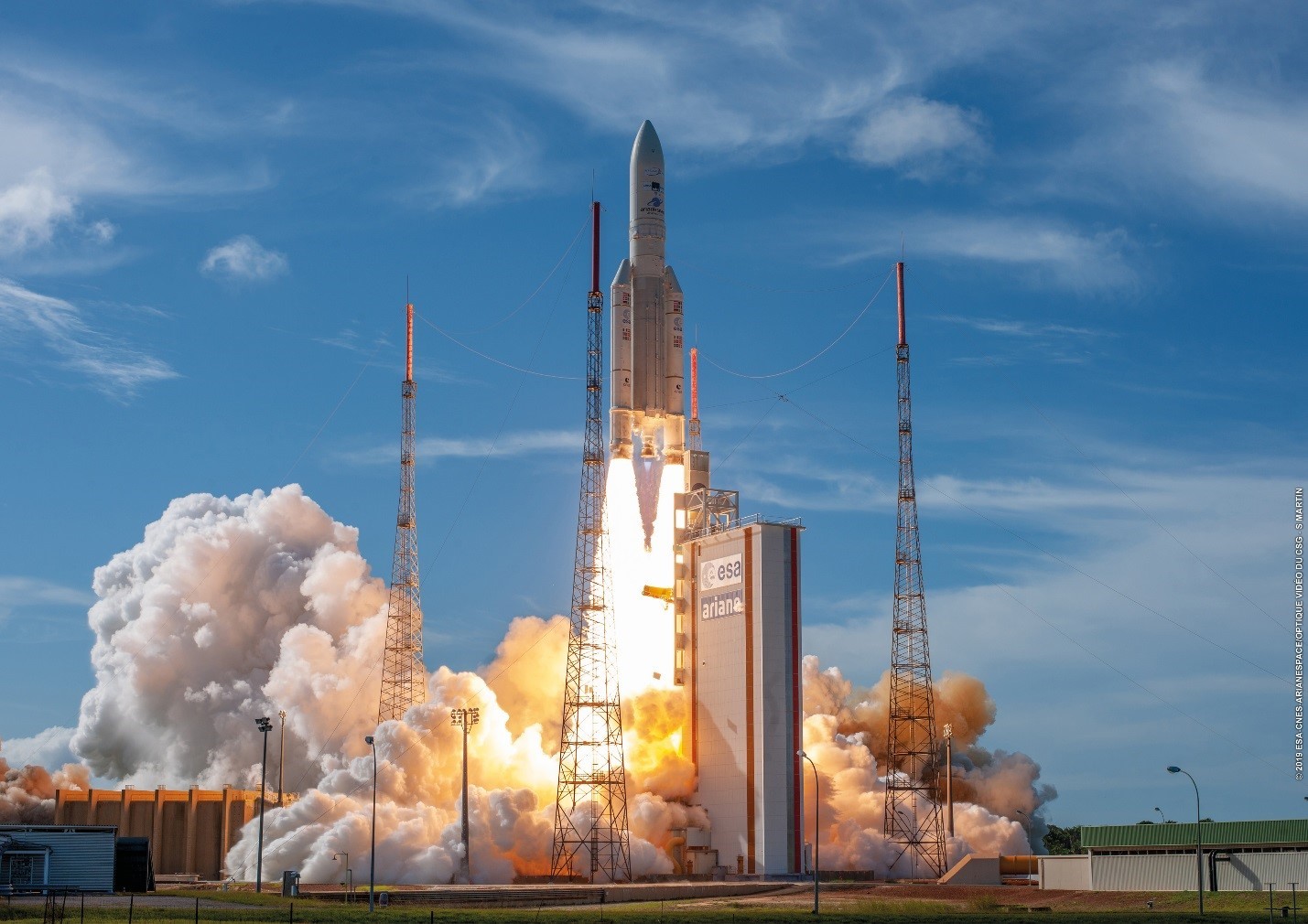Editor’s note:
Maxar is the industry leader in space infrastructure. We design, build, integrate and test solutions for space-based communications, Earth observation, exploration and on-orbit servicing and assembly. Our experience in building spacecraft goes back to the very first active repeater satellite, and the company has remained at the forefront of the field ever since.
Building satellites is not easy. They’re incredibly complex, loaded with cutting-edge technologies and are required to operate in the harsh environment of space and deliver essential services for many years.
We caught up with one of Maxar’s lead mechanical engineers, Omar Antonio, to hear about his experience working on the Intelsat 39 communications satellite.
Sitting at the Maxar viewing room in Palo Alto on Tuesday, August 8th 2019, I was extremely nervous. Megan Fitzgerald, Maxar’s Senior Vice President and General Manager of Space Infrastructure, was congratulating the team on all the hard work that had brought us to this point: Intelsat 39’s launch day. When the livestream came on and the countdown began, I couldn’t help but reflect on the past year-and-a-half I had dedicated to this program and the importance of the satellite to our customer, Intelsat, who would depend on it to deliver video distribution and connectivity services to its broadband network, mobility and government customers.
I transferred to the Mechanical Vehicle Engineering role from an Environmental Test Engineer through Maxar’s CORE engineering rotation program, which allows engineers to explore multiple engineering functions within the company. I was excited to help build the largest spacecraft on the floor at the time, but I had no idea what was in store for me. I was the lead for the mechanical build for Intelsat 39 through every major test phase, learning everything from my peers along the way. As a Mechanical Vehicle Engineer, I am responsible for providing engineering direction to mechanical spacecraft team and for overseeing the integration of all major components for my program including power, structures, thermal and payload components. Intelsat 39 was a team effort from the first panel hung through launch vehicle integration.

The first move that I directed was transferring the massive spacecraft in and out of our thermal vacuum chamber for testing. The thermal vacuum chamber ensures the spacecraft will meet the operational requirements in the harsh vacuum environment and temperature extremes of space. Moving through dynamics testing, I remember holding my breath as we did a full X-, Y- and Z-axis vibration test to ensure the spacecraft’s ability to withstand the punishing environment experienced during launch. The final stages of the spacecraft build at our compact antenna test range left me admiring the spacecraft on the positioner with its tower and main antenna reflectors in a fully deployed state. The compact antenna test range provides highly accurate antenna performance data for the communications payload, which is compared to pre-defined customer specifications for compliance.

Fast-forwarding to today, I can’t help to think that just a month ago I was in Kourou, French Guiana removing the spacecraft out of the shipping container and working with Arianespace and Guiana Space Centre for the final mechanical operations before launch. I had the honor of making the last spacecraft move onto Arianespace’s SYLDA dual-launch system and signing my name on the launch vehicle fairing after encapsulation.


As I watched Intelsat 39 launch successfully on the Ariane 5 rocket, I felt proud of all the hard work that my team and I had put into this project. The satellite was now on its way to providing video distribution and broadband connectivity services across Africa, Asia, Europe and the Middle East, and enhancing mobile connectivity for aero, maritime and government users operating in the Indian Ocean region. This launch is not only a company milestone but a personal one. Being a part of the manufacturing program from start to finish these past two years has shaped my skills and strengths as an engineer, and I am thankful for this once-in-a-lifetime opportunity that Maxar provided me.
